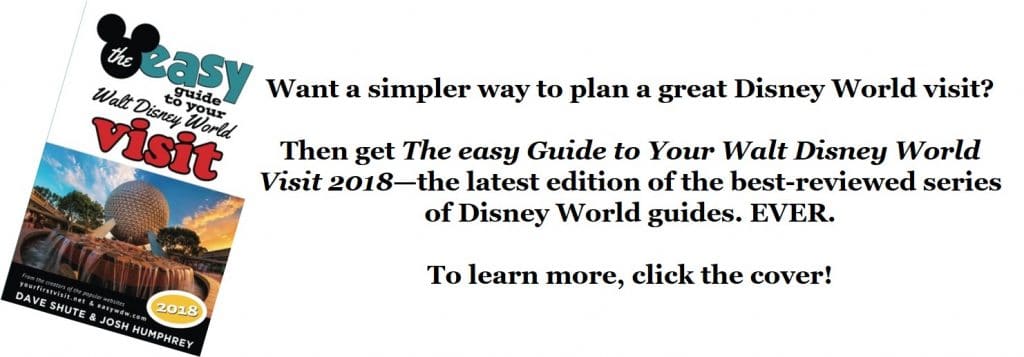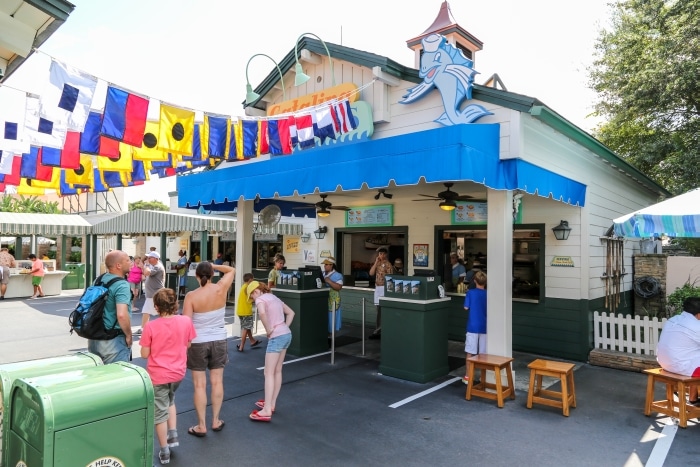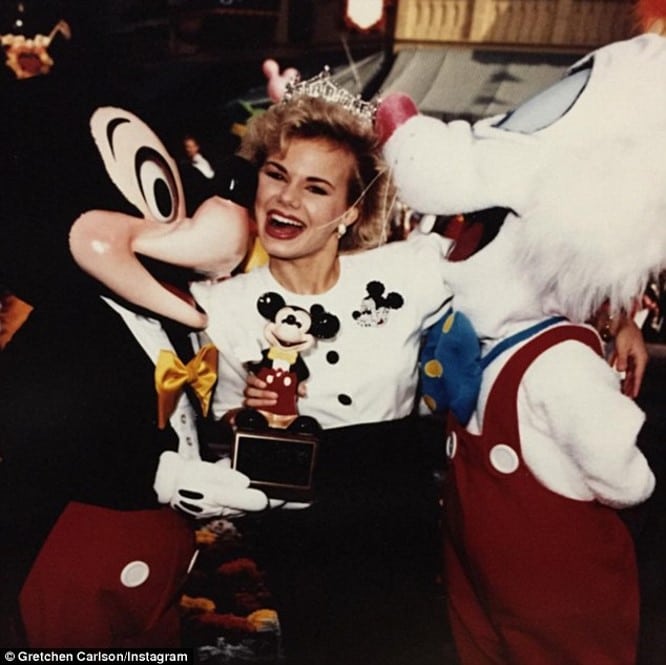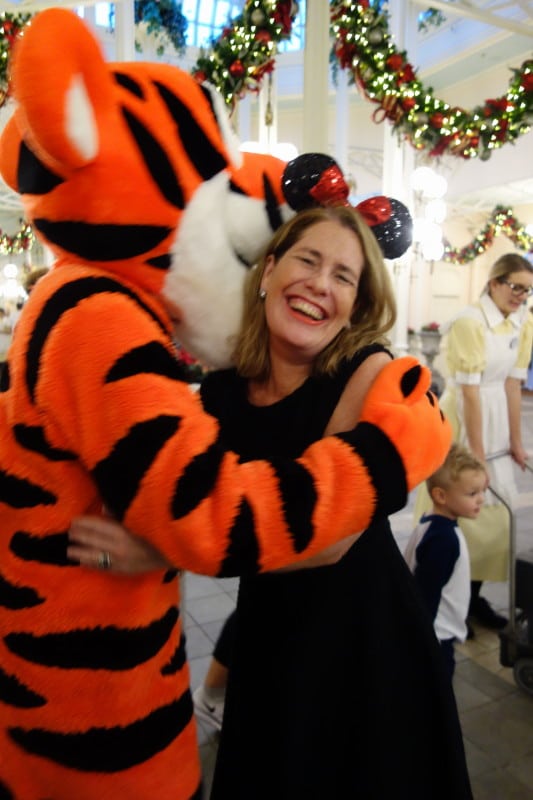Category — A Friday Visit with Jim Korkis
A Friday Visit with Jim Korkis: The Ducks of Disney World
Welcome back to Fridays with Jim Korkis! Jim, the dean of Disney historians, writes about Walt Disney World history every Friday on yourfirstvisit.net.
THE DUCKS OF DISNEY WORLD
By Jim Korkis
Donald Duck is not the only duck that delights visitors to Walt Disney World. Since its opening in 1971, guests have been enthralled by the many wild ducks that inhabit the waterways of the park and who are bold enough to waddle down the walkways with baby ducklings following obediently after their mothers.
These fowl fellows are so popular that there is even an Instagram account devoted to them so that guests can document their appearances in different locations in the parks. The ducks sometimes patiently pose in hopes that their patience will be rewarded with an edible treat.
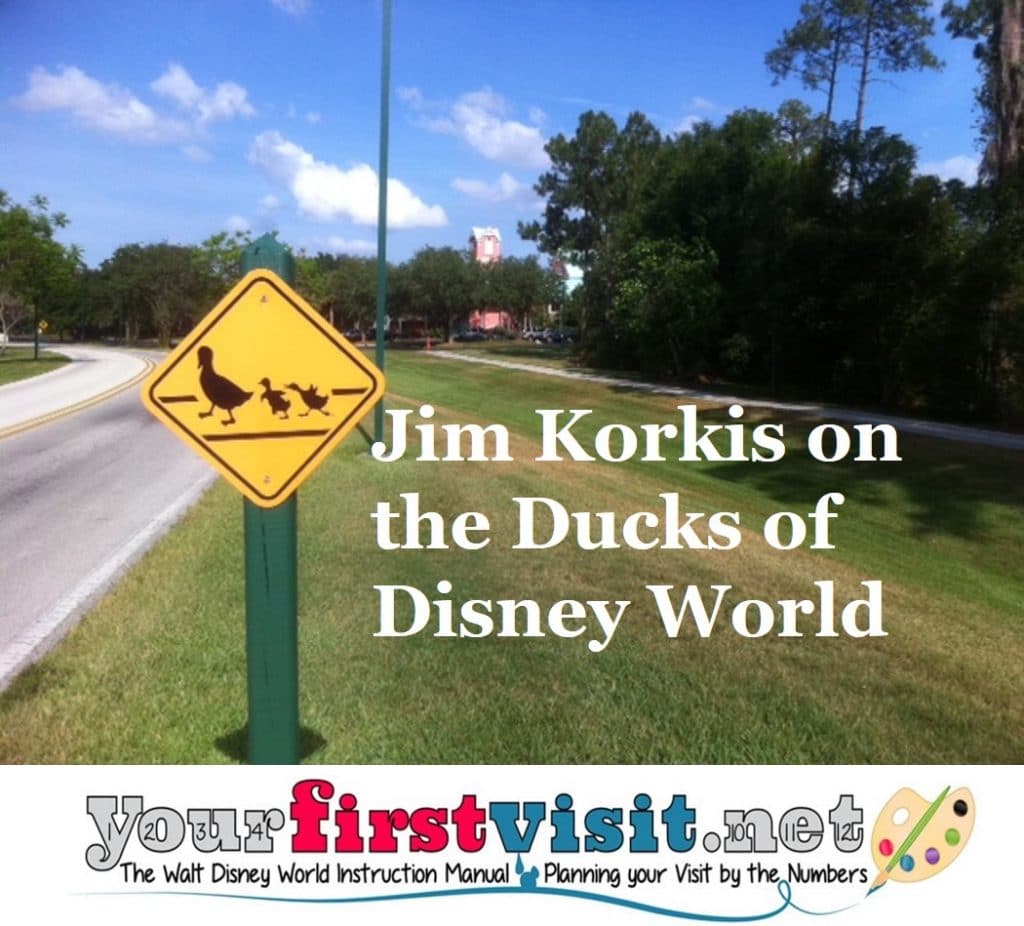
According to the cast magazine Backstage Disneyland Summer 1966, “Shortly after the Rivers of America area of Frontierland was completed, wild ducks flocked in to make it their home. These ducks soon came to be a big part of the show. One day, the duck population started to thin out dramatically and it wasn’t long before a memo appeared dated sometime in 1956.
“It was directed to all maintenance and construction workers and read: ‘Any employee caught leaving Disneyland with a duck in his lunch pail will be immediately dismissed’. Needless to say, the duck population was soon on the increase again.”
The opening of Walt Disney World in 1971 proved to be even a more enticing location for migrating flocks and every spring, the air is filled with the quacking sounds of newborn ducklings.
With a fearlessness not found in the wild, these offspring, accompanying their parents, wander the park especially through the chairs and tables of the outdoor food areas in hopes of scavenging a special treat of popcorn.
Some guests specifically buy a bag of popcorn to feed to the ducks and the ducks know it and will waddle up dangerously close while quacking away in hopes of getting a handout.
However, life is dangerous for these feathered friends. Feral cats patrol the park at night looking for baby duck or duck eggs. In addition, local alligators find them a tasty and easily obtainable snack as well. Often, bigger birds like herons or hawks will sit patiently and then swoop down to grab a baby duckling that has strayed a little bit too far from its flock either for itself or to feed its offspring.
Disney does try to discourage guests from feeding the wild animals including not just ducks but squirrels, rabbits and other wildlife that are not an official part of the park population. As an accredited member of the AZA, Disney realizes that some foods are not always good for these creatures and can actually cause digestive problems or disease that can prove fatal.
Even the guests themselves can pose a threat as they gather too closely around the baby ducklings and can trample them which is why cast members often try to wrangle the ducks off of congested walkways or accompany them back to the water.
However, since the ducks eat free at Walt Disney World, are surrounded by so many others of their kind and enjoy the many advantages that Disney takes with keeping the water clean, it seems that the perks far outweigh the disadvantages and that it is a bit safer than some of the other environments they might visit.
* * * * *
Thanks, Jim! And come back next Friday for more from Jim Korkis!
In the meantime, check out his books, including his latest, Call Me Walt, and his Secret Stories of Walt Disney World: Things You Never You Never Knew, which reprints much material first written for this site, all published by Theme Park Press.
Follow yourfirstvisit.net on Facebook or Twitter or Pinterest!!
January 12, 2018 No Comments
A Friday Visit with Jim Korkis: Meet the World
Welcome back to Fridays with Jim Korkis! Jim, the dean of Disney historians, writes about Walt Disney World history every Friday on yourfirstvisit.net.
MEET THE WORLD, PLANNED FOR EPCOT’S JAPAN PAVILION
The huge show building in the Japan pavilion at the back of the Mitsukoshi store was meant to house an audio-animatronics attractions called “Meet the World,” and although the attraction isn’t, the building is still there (in red in the image—Dave).
Imagineer Tony Baxter stated that “It’s now the place where we store all the paint that’s used at Epcot and is also used for carpentry and some storage for the park.”
Konosuke Matsushita, the founder of the Matsushita Electric Industrial Company, had a strong interest in Japanese history and a fondness for WDW’s Hall of Presidents audio-animatronics in re-creating real historical figures. When he was approached in the late 1970s to sponsor a pavilion at the forthcoming Tokyo Disneyland, he agreed if there was an attraction that matched his interests.
Imagineer Claude Coats had been working on a theater attraction for Epcot’s Japan pavilion called “The Winds of Change” that would incorporate the history of Japan and use audio-animatronics of important figures of the past.
Certain politically sensitive issues like Japan’s participation in World War II were carefully sidestepped as they were in the show at the American Adventure. That time was alluded to in the show as the “dark days”.
As a cost saving measure since the attraction was already built, it was sent to Tokyo Disneyland which was being created at the same time as Epcot, along with the Magic Kingdom’s Mickey Mouse Revue and the new Dumbo attraction built for Walt Disney World. So doing helped lower the budget and the time necessary to open Tokyo Disneyland.
“Meet the World” opened at Tokyo Disneyland as one of that park’s initial attractions on April 15, 1983, and closed on June 30, 2002. It was advertised as “Explore Japan’s heritage on an incredible time-travel adventure!”
Matsushita Electric subsidized the attraction so it was one of the few free ones when the park still used attraction tickets. Japan Airlines later took over sponsorship.
It was only one of two attractions that focused on Japan since the Oriental Land Company wanted to present an American version of a Disney theme park and had cherry-picked attractions from both Disneyland and Walt Disney World to create the ultimate American experience.
“Meet the World” was a roughly eighteen minute four-act show that showcased Japan’s history of trade and interaction with other countries. The island nation’s volcanic beginnings were discussed along with early trading with other nations, isolationism, the reopening of the country, and its promising future.
The theater was similar but in away opposite to that of the Carousel of Progress. In the Carousel, the audience rotated around the various stages. In “Meet the World”, after each scene the seating area would slowly rotate 90 degrees to point the audience in the direction of the next stage. The rotating inner core with the stages in the outer ring allowed for larger stages but limited the overall seating capacity. In addition, each stage had a large movie screen in the background to help tell the story with the figures interacting with the images.
An audio-animatronics talking crane led a young boy and girl from Yokohama on a time travel journey that featured audio-animatronics representations of prominent Japanese and Western figures to re-create a particular event. The dialog was in Japanese with characters from other countries speaking in their native languages. Headphones were available in the back row for translated dialog.
The attraction had over thirty audio-animatronics figures. The figures were sculpted by Blaine Gibson, except for three Meiji figures who were done by a Japanese sculptor from Tokyo’s Toho Studios.
The “Meet the World” song was written by the Sherman Brothers and played as the theater rotated each time to its new position.
* * * * *
Thanks, Jim! And come back next Friday for more from Jim Korkis!
In the meantime, check out his books, including his latest, Call Me Walt, and his Secret Stories of Walt Disney World: Things You Never You Never Knew, which reprints much material first written for this site, all published by Theme Park Press.
Follow yourfirstvisit.net on Facebook or Twitter or Pinterest!!
January 5, 2018 9 Comments
A Friday Visit with Jim Korkis: Catalina Eddie’s
Welcome back to Fridays with Jim Korkis! Jim, the dean of Disney historians, writes about Walt Disney World history every Friday on yourfirstvisit.net.
CATALINA EDDIE’S AT DISNEY’S HOLLYWOOD STUDIOS
By Jim Korkis
Many think that the Catalina Eddie’s quick-serve food and beverage location at the Sunset Market Ranch at DHS was meant to be a reference the popular 1988 feature film Who Framed Roger Rabbit where one of the plot points in the film was a past vacation detective Eddie Valiant and his girlfriend Dolores took to the island of Catalina. However, that is not the case at all.
The name is a reference to a Southern California weather condition known as the Catalina Eddy that sometimes occurs.
Here’s a description from the San Francisico State University Meterology site:
“The Catalina eddy, named for the Catalina Islands off the coast of Los Angeles, is an occasional phenomenon of coastal southern California south of Point Conception. It sometimes forms when the wind across the region in the lower atmosphere blows from the north or northeast.
“As air crosses the east-to-west oriented mountain ranges north of Santa Barbara (just east of Point Conception) and descends to the ocean, the pressure on the air increases, causing it to warm dramatically. As an indirect consequence of this warming, a region of relatively low pressure (compared to surrounding areas at the same altitude) develops in the lower atmosphere, south or southwest of the east-to-west oriented coastline.
“This warm, cloud-free region of relatively low pressure offshore draws cool marine air up the coast from the south. The marine air–which is often full of fog or low stratus clouds visible from space–then spirals around the low pressure center, creating the eddy and bringing cooling winds to the Los Angeles basin.”
Catalina Eddie’s is part of the Sunset Market Ranch that includes a number of different counter service food venues like Rosie’s All American Cafe, Anaheim Produce, Hollywood Scoops and the Toluca Legs Turkey Company.
The Sunset Market Ranch was inspired by the original Farmers Market located at the intersection of 3rd and Fairfax in Los Angeles. During the summer of 1934, a group of farmers set up an informal market at that location.
The idea for expanding the space into a permanent marketplace with various stalls originated with two individuals, Roger Dahlhjelm, a businessman, and Fred Beck, an advertising copywriter. A complex of stalls and buildings quickly appeared in the formerly vacant area.
The market’s now iconic clock tower was built in 1941 and remains a part of the complex to this day, so its inclusion at the Sunset Market Ranch sets the time period as 1941 or later. Rosie’s All American Cafe establishes that the area is sometime during World War II.
The nautical pennants hanging overhead spell “CATEDDIES”. The slogan for the eatery is “Harbor Your Hunger”. Despite an anthropomorphic flying fish in a sailor cap on the sign, the location ironically does not sell any kind of fish item on its menu.
The image references the famed flying fish that soar out of the Island waters to heights of up to 30 feet and glide for distances as long as a quarter mile during the months approximately May to September every year.
* * * * *
Thanks, Jim! And come back next Friday for more from Jim Korkis!
In the meantime, check out his books, including his latest, Call Me Walt, and his Secret Stories of Walt Disney World: Things You Never You Never Knew, which reprints much material first written for this site, all published by Theme Park Press.
Follow yourfirstvisit.net on Facebook or Twitter or Pinterest!!
December 29, 2017 No Comments
A Friday Visit with Jim Korkis: Na’vi River Journey
Welcome back to Fridays with Jim Korkis! Jim, the dean of Disney historians, writes about Walt Disney World history every Friday on yourfirstvisit.net.
THE NA’VI SHAMAN OF SONGS
By Jim Korkis
“The Pandora attractions have very deliberate emotional moments crafted into them, the way a good story does, the way a good film does,” said Imagineer Joe Rohde. “It’s not as simple as just coming to a place that looks realistic. It’s a place that’s been deliberately imbued with the emotions of awe, of wonder, of respect, of harmony.”
The new Animal Kingdom attraction Na’vi River Journey opened in May 2017. In it, guests sail serenely down the Kaspavan River in a reed boat gently winding through a bioluminescent rainforest in the Valley of Mo’ara on the planet of Pandora. The Na’vi, the indigenous people of the planet, are seen throughout the ride in scenes where they are hunting and gathering.
Native wildlife can be seen on the nearby banks including the dangerous viper wolves and gentle woodsprites as well as mysterious glowing fauna.
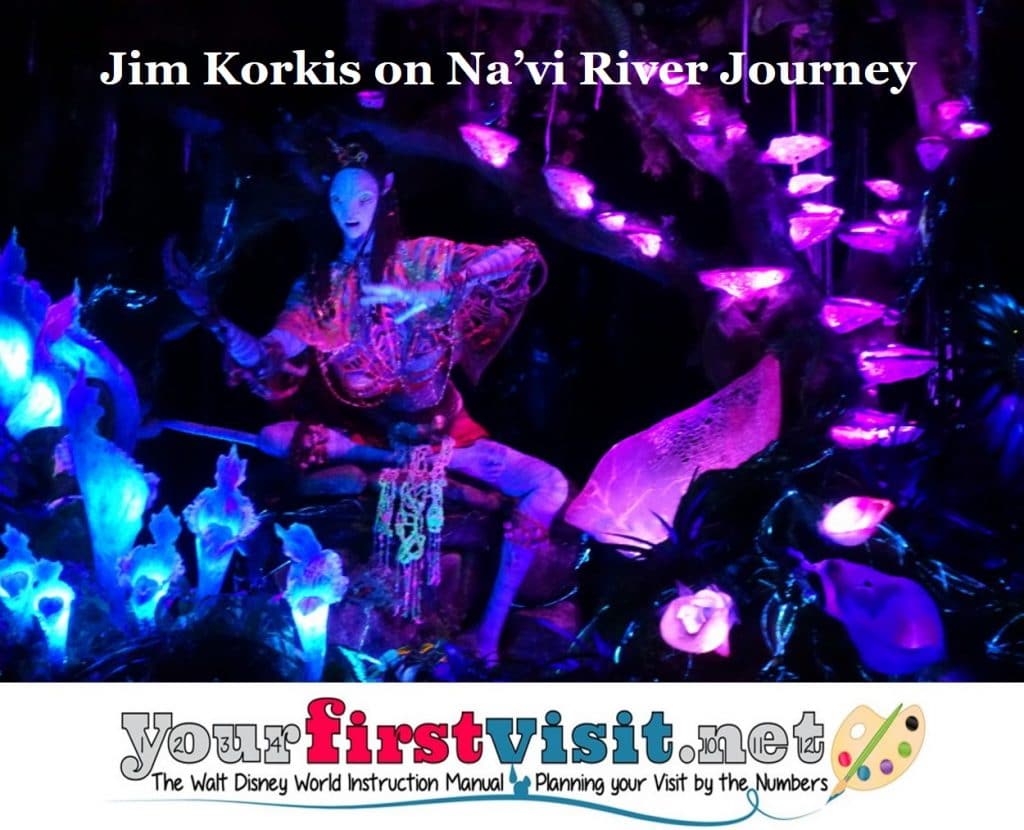
“Above the queue is another intricate hand-woven piece that actually serves as a map of the river that winds through Pandora. The blue ropes represent the river, and the other areas represent the rest of the bioluminescent forest. At night, this piece takes on new life as it is illuminated with light that moves, showing where various life forms are as they journey down the river.”
All of the activity seems to be heading in the same direction and the lazy river journey culminates in the appearance of a figure who has a deep connection to the life force of Pandora and celebrates that connection through her music. Music is central to the culture of the Na’vi.
This is the Na’vi Shaman of Songs, who is radiating positive energy into the forest. The rough translation of her song basically thanks the Great Mother for the many gifts that allow the Na’vi to live well in the forest.
All of the other creatures have actually been presented as realistic projections on layers of screens that are positioned inside the magnificent scenery.
The Na’vi Shaman of Songs is the most complicated audio-animatronics figure ever created by Walt Disney Imagineering. Despite its sophistication and many functions, it is not a creation of Garner Holt Productions who have supplied many intricate audio-animatronics to the Disney theme parks.
During a robotics event in Boston, Disney provided a glimpse at the inner workings of the Na’vi Shaman, which is larger so it can hold more mechanics to provide more realistic movements and expressions.
“The shaman is even more extraordinary than we expected,” said Rohde. “Her facial expressions, little movements in the cheek, tiny movements in the eyelid – each one of these carries an emotion she’s capable of conveying.”
In the event of a malfunction of the audio-animatronics figure, a hidden scrim can be rolled down and then an image of the shaman projected onto it. Above the figure, where guests rarely if ever look, is a circular ring indicating how a screen curtain can be lowered and hide the actual figure.
“Na’vi River Journey is a very sweet, lyrical adventure through a spectacular visual environment that just becomes more and more spectacular as you go on,” explained Rohde. “The bioluminescent activity of the plants around you unfolds in richer and richer scenes in really just a very uplifting, wonderful kind of journey.”
* * * * *
Thanks, Jim! There’s more on Na’vi River Journey here. And come back next Friday for more from Jim Korkis!
In the meantime, check out his books, including his latest, Call Me Walt, and his Secret Stories of Walt Disney World: Things You Never You Never Knew, which reprints much material first written for this site, all published by Theme Park Press.
Follow yourfirstvisit.net on Facebook or Twitter or Pinterest!!
December 22, 2017 No Comments
A Friday Visit with Jim Korkis: “What’s Next?”
Welcome back to Fridays with Jim Korkis! Jim, the dean of Disney historians, writes about Walt Disney World history every Friday on yourfirstvisit.net.
I’M GOING TO WALT DISNEY WORLD
By Jim Korkis
Disney refers to the famous marketing campaign that the rest of us know as “I’m Going to Walt Disney World!” as “What’s Next?”
After a series of game highlights set to the tune “When You Wish upon a Star”, the camera cuts to a player in the immediate aftermath of a Super Bowl win and an unseen narrator poses the famous question, “(Blank), you’ve just won the Super Bowl, what are you going to do next?”
The player looks gleefully into the camera and answers that he is going to Disneyland or Walt Disney World. The commercial ends with an image of fireworks exploding over Cinderella’s Castle at Walt Disney World, or Sleeping Beauty’s Castle at Disneyland.
The narrator is Mark Champion, a veteran radio play-by-play announcer for several football teams like the Tampa Bay Buccaneers, the Detroit Pistons and the Detroit Lions. He got the job because a college classmate was a marketing director at Disney.
Typically, the celebrity records two different versions, one mentioning Disneyland and the other Walt Disney World. Disney gives them an “MVP” all-expense paid trip, flying them on a private jet to Disneyland or Walt Disney World and then puts their family up in a suite for the duration of their vacation. They also are made the Grand Marshall of a parade and take part in various events for Disney during their stay.
As former Disney CEO Michael Eisner recalled, “In January 1987, we were launching Disneyland’s Star Tours, an attraction based on Star Wars. After the ribbon-cutting ceremony, my wife, Jane, and I had dinner with George Lucas, as well as Dick Rutan and Jeana Yeager, who had just become the first people to fly around the world without stopping.
“It was late and the conversation hit a lull as we waited for our food. So I asked Dick and Jeana, ‘Well, now that you’ve accomplished the pinnacle of your aspirations, what could you possibly do next?’ Rutan responded, without hesitation, ‘I’m going to Disneyland’. And of course I go, ‘Wow, that’s cool! You made the right choice’ But my wife interjects: ‘You know, that’s a good slogan.’ And so that is how it all began.”
Just weeks later, Disney launched the series of commercials following Super Bowl XXI on January 25, 1987. That first commercial was done by reluctant quarterback Phil Simms who was paid $75,000 (later the price was dropped for others to around $30,000) and was the MVP for the game.
Simms played for the New York Giants who beat the Denver Broncos 39-20. Broncos quarterback John Elway had been offered a similar amount of money whether his team won or lost so Disney hedged its bets.
Disney had produced halftime shows for the NFL so had a good relationship with the organization and paid them for having access on the field after the game.
Disney then followed this up with making three more such commercials in 1987, following other major sporting championships. These included hiring yachtsman Dennis Conner, after winning the America’s Cup; NBA star Magic Johnson, after the Lakers won the NBA Finals, and MLB player Frank Viola, after the Twins won the World Series that year.
Other commercials featuring non-Super Bowl participants included Bruce Springsteen, Gretchen Carlson (Miss America 1989), Santa Claus (1997), Michael Jordan, Nancy Kerrigan and even American Idol winners like Kris Allen, Lee DeWyze and Scotty McCrerry.
However, it is the NFL Super Bowl games that most people remember. The commercial has aired after every Super Bowl since 1987, except for one. In 2005, the commercial did not air although the reason for this absence has never been made clear.
* * * * *
Thanks, Jim! In the “small world” department, I once exchanged phone numbers with and asked out on a date someone who’s been part of this campaign–Gretchen Carlson. (Gretchen: if you are reading this (and why would you not be?)–think the Apartments at Nautica.)
But then I met the lovely Amy Girl, and we just celebrated our 20th wedding anniversary!
And come back next Friday for more from Jim Korkis!
In the meantime, check out his books, including his latest, Call Me Walt, and his Secret Stories of Walt Disney World: Things You Never You Never Knew, which reprints much material first written for this site, all published by Theme Park Press.
Follow yourfirstvisit.net on Facebook or Twitter or Pinterest!!
December 15, 2017 No Comments
A Friday Visit with Jim Korkis: The Mosaic at the Land Pavilion
Welcome back to Fridays with Jim Korkis! Jim, the dean of Disney historians, writes about Walt Disney World history every Friday on yourfirstvisit.net.
THE LAND MOSAIC
By Jim Korkis
Walt Peregoy was a color stylist and background artist for animated films including Sleeping Beauty, 101 Dalmatians and the Sword in the Stone. From 1977-1983, he worked at WED, and did work for The Land pavilion and the original Journey Into Imagination pavilion at Epcot’s Future World.
Peregoy designed the entrance mosaic for The Land pavilion, and answered my questions about it in a 2007 interview: “It is three thousand, six hundred square feet. Every celebrity in the world has gone through Disneyland, I’m sure, but there’s nothing obvious, that sticks out as a particular work of art. This does.
“For the Land pavilion, I designed the entranceway and the twenty-seven foot tall, 360 degree sky inside. I designed the three solid balloons that would go up and down with different foods. I designed the fountain below the balloons, but I didn’t get my way with the fountain. Jim Sarno sculpted it. Beautiful. He told me he left because the fountain wasn’t finished with the top the way I designed it. I intended that it all be different foods not only sculpted but painted.
“Orlando Ferrante called me one day and said, ‘This is about the mosaic’. I said, ‘Oh, I guess you’re not going to do it. I understand that’. He said, ‘No, we’re going to do it!’ 3,600 square foot mirror image. It’s fantastic! I’ve still got the original study plaque that I made of it.
“They blew up it up verbatim. I go over to see this German mosaicist. He lived up above Beverly Drive up in the hills until it finally became a dirt road. He was an ex-S.S. German. I told him, ‘My wife’s French’. He said to me, ‘You’ll have to come over to dinner. Bring your wife’. I said, ‘You’ve gotta be kidding! My wife will kill you. My young brother-in-law was beaten to death over a period of four years’.
“Every time I would leave him, he would come out to the garage with me and I would be in a car backing out, he would say, ‘See ya!’ and he would click his heels! He wasn’t being mean. He was just so German. I thought, ‘You got to be kidding!’ He clicked his heels.
“I have to admit he was good. I would go up to his house to see how the mosaic was coming along periodically but he would always click his heels when he said ‘goodbye’.
“When Disney said to me, ‘You can’t put your name on it’, I said, ‘Then his name doesn’t go on it either’. Eventually Disney said, ‘Mosaic originally styled and designed by Walt Peregoy’. Even when I’m dead, even when nobody ever knows me, I will still know.”
The transformation into a physical reality was the task of world-famed mosaicist Hanns-Joachim Scharff with his daughter-in-law Monika. Scharff studied art history at the University of Leipzig and was inspired and drawn to mosaics as a youth during a visit to Italy. He was also an S.S. interrogator for the Nazis during World War II.
In 1966, he did mosaic work for New Orleans Square in Disneyland. In 1970, he and his wife and daughter-in-law did the impressive mural inside the breezeway of Cinderella Castle which was one of the reasons he was asked to do this mosaic.
The Land Pavilion mosaic has approximately 150,000 individually cut and shaped pieces in 131 different colors. The pieces are made of marble, granite, slate, Byzantine glass, Venetian glass, real gold, mirror, ceramic and pebbles.
The mural is supposed to be a mirror image but there is one tile different in each side. One side has a ruby colored tile while the other has an Emerald colored tile. Hanns-Joachim worked on one side of the mural and Monika on the other. The different stones represent their birth stones.
* * * * *
Thanks, Jim! Jim has also written about Scharff here. And come back next Friday for more from Jim Korkis!
In the meantime, check out his books, including his latest, Call Me Walt, and his Secret Stories of Walt Disney World: Things You Never You Never Knew, which reprints much material first written for this site, all published by Theme Park Press.
Follow yourfirstvisit.net on Facebook or Twitter or Pinterest!!
December 8, 2017 1 Comment


